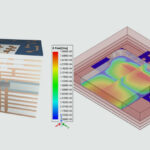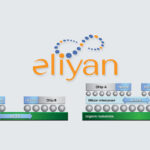ASIA ELECTRONICS INDUSTRYYOUR WINDOW TO SMART MANUFACTURING
TOPPAN Tech Paves the Way For Better ICs
TOPPAN Inc. (TOPPAN), a TOPPAN Group company and wholly owned subsidiary of TOPPAN Holdings Inc., has addressed a challenge for heterogeneous integration of semiconductors. Specifically, by developing a high-reliability coreless organic interposer1 for next-generation semiconductors.
With this new coreless organic interposer, TOPPAN has used a material with a low coefficient of thermal expansion (CTE) to reinforce both sides of the redistribution layer (RDL). While supporting fine-pitch interconnections and a low CTE, the simple coreless structure also adds rigidity.
Furthermore, the organic interposer can be independent from the carrier. Thus, delivering the world’s first organic interposer for which standalone electrical inspection assurance is possible. The process also enhances reliability, making it possible to contribute to a significant reduction in loss due to chip disposal resulting from interposer defects.
TOPPAN is currently showcasing the new coreless organic interposer at JPCA Show 2024. The show runs at the Tokyo Big Sight from June 12 to 14.

Background
The use of heterogeneous integration aims to enhance semiconductor performance. Moreover, silicon interposers are currently the predominant type. However, due to cost considerations, growth in semiconductor packaging adopting organic interposers will likely happen in the future.
Nonetheless, general organic interposers have poor structural rigidity, and standalone handling is difficult. This means they need fixing them to a carrier is necessary or the like for electrical inspection. Furthermore, the inability to confirm conduction on both the front and rear sides in such a state has presented a challenge.
TOPPAN’s new coreless organic interposer for next-generation semiconductors has both sides of the RDL reinforced with a low CTE material. The simple coreless structure supports fine pitch interconnections and a low CTE as well as adding rigidity. This makes it possible for the organic interposer to be independent of a carrier, facilitating standalone electrical inspection assurance of the organic interposer.
If an organic interposer is defective, the LSI chip also has to be disposed of. However, if the organic interposer has high reliability and is subject to electrical inspection assurance in advance, it will be possible to significantly reduce loss. Specifically, due to disposal of chips.
Future Development

TOPPAN aims the adoption of its new product for organic interposers and semiconductor packaging substrates. Specifically, for applications such as data center CPUs, and AI accelerators. Samples of next-generation semiconductor-packaging-related products including the new structure will be available from 2027. Moreover, it will launch mass production by 2028.
13 June 2024




